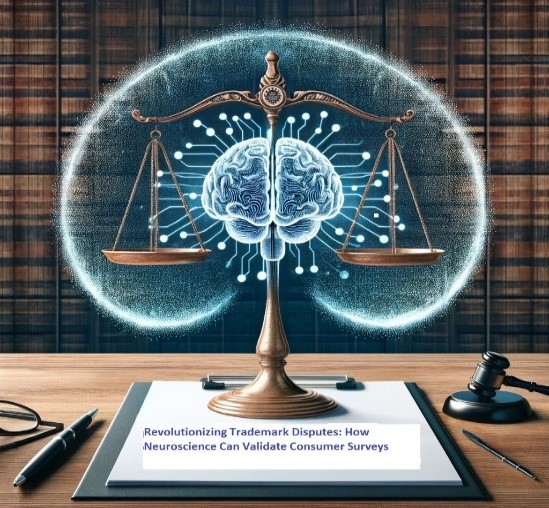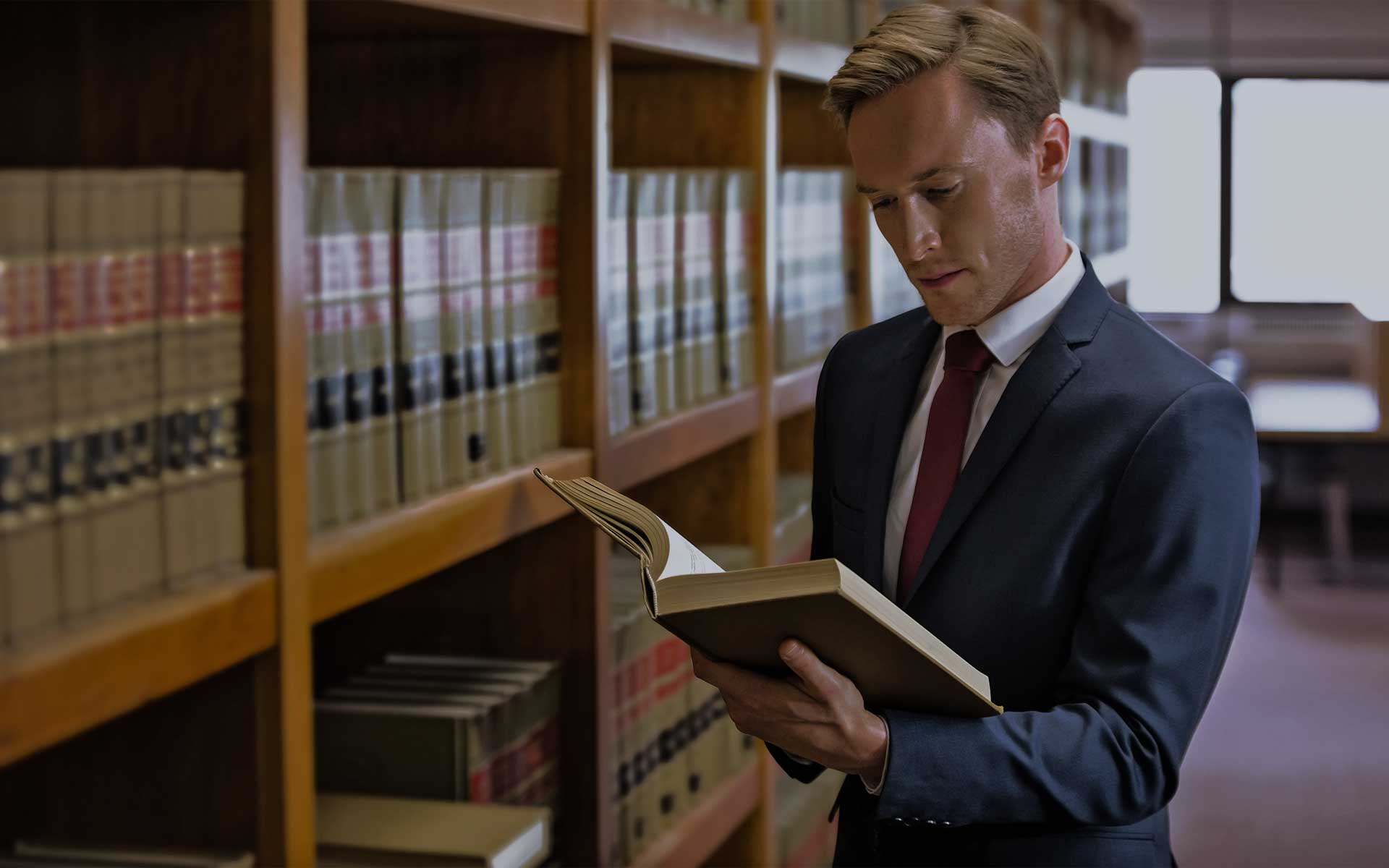Revolutionizing Trademark Disputes: How Neuroscience Can Validate Consumer Surveys


Introduction: In the intricate dance of trademark law, consumer surveys have long been a cornerstone for demonstrating confusion between similar products. However, the credibility of these surveys has often been scrutinized by the judiciary, casting a shadow over their objectivity and reliability in high-stakes legal battles. Enter the groundbreaking intersection of neuroscience and legal scholarship, offering a compelling solution to fortify the integrity of consumer insights through brain imaging technologies.
The Challenge with Traditional Consumer Surveys: Consumer surveys in trademark cases aim to gauge the likelihood of confusion between competing trademarks, a critical factor in determining infringement. Despite their widespread use, these surveys frequently come under fire from judges who question their design, execution, and the impartiality of the results. The subjective nature of responses and the potential for bias have made the quest for more objective methodologies imperative.
The Evolution of Evidence in Trademark Law: A Nod to Judge Richard Posner.
In the dynamic intersection of law and technology, the quest for objectivity in trademark disputes has led to innovative approaches that challenge traditional methodologies. This evolution is epitomized by the scrutiny and insights of one of the legal field’s most esteemed figures, Judge Richard Posner. Known for his rigorous analysis and skepticism towards conventional wisdom, Posner’s critique of consumer surveys in trademark cases has sparked a pivotal shift towards seeking more reliable forms of evidence.
Consumer surveys, once the gold standard for demonstrating consumer confusion in trademark litigation, have increasingly come under judicial scrutiny. Posner, in particular, has been vocal about the limitations and biases inherent in these surveys, pushing the legal community to explore alternative methods that could withstand the demands of objective analysis. His skepticism laid the groundwork for a broader questioning of the methods used to gauge trademark infringement, setting the stage for a transformative dialogue on the integration of science and law.
In this context, a group of legal and neuroscience scholars has proposed an intriguing solution: the use of brain scans to bolster survey results. This approach promises to transcend the subjective nature of traditional surveys by providing tangible, physiological evidence of how consumers react when exposed to similar products. By measuring neural responses, this method aims to offer an unprecedented level of objectivity in understanding consumer perception, directly addressing the concerns raised by critics like Posner.
As we delve deeper into the implications of this groundbreaking intersection, it becomes clear that the fusion of neuroscience and trademark law could herald a new era in legal evidence. This article explores how leveraging brain imaging technology can not only validate but revolutionize the way we approach consumer surveys in trademark disputes, turning the page on a chapter that Judge Richard Posner helped write with his critical insights.
Neuroscience to the Rescue: A collaborative effort between legal experts and neuroscientists proposes an innovative approach: leveraging brain scans to objectively measure consumer reactions to similar products. This method transcends the limitations of self-reported data, providing tangible, physiological evidence of confusion – or the lack thereof.
How It Works: When consumers view products or trademarks, their brain activity offers unspoken insights into their perceptions. Technologies like functional Magnetic Resonance Imaging (fMRI) can detect nuances in cognitive processing that traditional surveys may miss. For instance, areas of the brain associated with decision-making and memory retrieval light up in distinct patterns when a subject experiences confusion, offering a quantifiable measure of the trademark’s impact.
The Frontal Lobes: Decision-Making Central.
The frontal lobes, particularly the prefrontal cortex, play a pivotal role in decision-making. This brain region is involved in planning complex cognitive behaviors, personality expression, decision-making, and moderating social behavior. The most anterior part of the frontal lobes, the prefrontal cortex, is intricately linked with the ability to discern between conflicting thoughts, determine good from bad, and predict the outcomes of actions. In the context of trademark disputes and consumer behavior, how individuals assess similar products and brands heavily relies on the functioning of this area.
- Ventromedial Prefrontal Cortex (vmPFC): This specific part of the prefrontal cortex is crucial for value-based decision-making and emotional responses. When consumers evaluate trademarks or brands, the vmPFC assesses the value and emotional resonance of these symbols, influencing their preferences and loyalty.
The Temporal Lobes: The Seat of Memory.
Memory plays a fundamental role in trademark recognition and consumer decision-making. The temporal lobes, located on each side of the brain, are key to processing sensory input and are crucial for forming and retrieving memories.
- Hippocampus: Nestled within the medial temporal lobe, the hippocampus is essential for forming new memories and connecting emotions and senses, such as smells and sounds, to these memories. When consumers encounter a trademark or brand, the hippocampus helps retrieve associated memories and emotions, influencing their perception and decision-making.
- Amygdala: Although more commonly associated with emotional processes, the amygdala interacts closely with the hippocampus in emotional memory. This interaction can significantly affect a consumer’s emotional response to trademarks and brands, driving loyalty or aversion based on past experiences.
The Intersection of Neuroscience and Trademark Law.
Understanding the brain regions involved in decision-making and memory not only enriches our comprehension of consumer behavior but also offers valuable insights for trademark law. In trademark disputes, where confusion or association between brands is a key concern, neuroscience can provide objective evidence of how consumers’ brains react to different trademarks. By examining brain activity in areas like the vmPFC and the hippocampus, it becomes possible to assess the likelihood of confusion or the strength of association between competing brands on a neural level.
This scientific approach could revolutionize trademark litigation, offering concrete, unbiased evidence of consumer perception. As we continue to unravel the mysteries of the brain, the potential to apply these insights to legal and marketing strategies grows, promising a future where decisions are informed by a deep understanding of the human mind’s inner workings.
The Benefits Unveiled:
- Objective Evidence: Brain scans introduce an unbiased metric to the legal discourse on trademark confusion, potentially transforming how cases are argued and adjudicated.
- Deeper Insights: Beyond merely affirming confusion, neuroimaging can reveal the cognitive processes behind consumer decisions, providing richer data for legal arguments.
- Strengthening Survey Validity: Coupling traditional surveys with neuroscience can address judicial concerns, offering a more robust foundation for legal claims.
Real-World Applications and Implications: This interdisciplinary approach is not without its challenges, including the practicality of integrating high-tech neuroscience into legal proceedings and the need for judicial acceptance. Yet, the potential to enhance the objectivity and reliability of consumer surveys in trademark disputes cannot be understated. As this methodology gains traction, it could pave the way for more scientifically grounded legal standards, transforming trademark litigation.
Conclusion: The integration of neuroscience into trademark law represents a pioneering leap towards objectivity in legal disputes over brand confusion. By validating consumer surveys with the unequivocal evidence of brain activity, the legal community has an opportunity to refine its tools and embrace a future where science and law converge to unveil the truth behind consumer perceptions.
***
Need help overcoming IP challenges? Contact Emmanuel Coffy at [email protected] or call (973) 996-2947 to see how we can help. You can also visit our website www.coffylaw.com.
If you wish to receive future articles, follow me on LinkedIn or send an email to [email protected] with your contact information indicating you wish to receive future articles.
For SMEs looking to dive deeper into the patent process, our upcoming workshop offers hands-on guidance from experienced IP professionals. Secure your spot today and take the first step towards protecting your tech innovation. Stay ahead in the game of IP protection – register now! https://www.coffylaw.com/live-seminar-signup/
For a free eBook activate the link below.
https://www.coffylaw.com/ebook-request/
© 2024 COFFYLAW, LLC – All rights reserved


